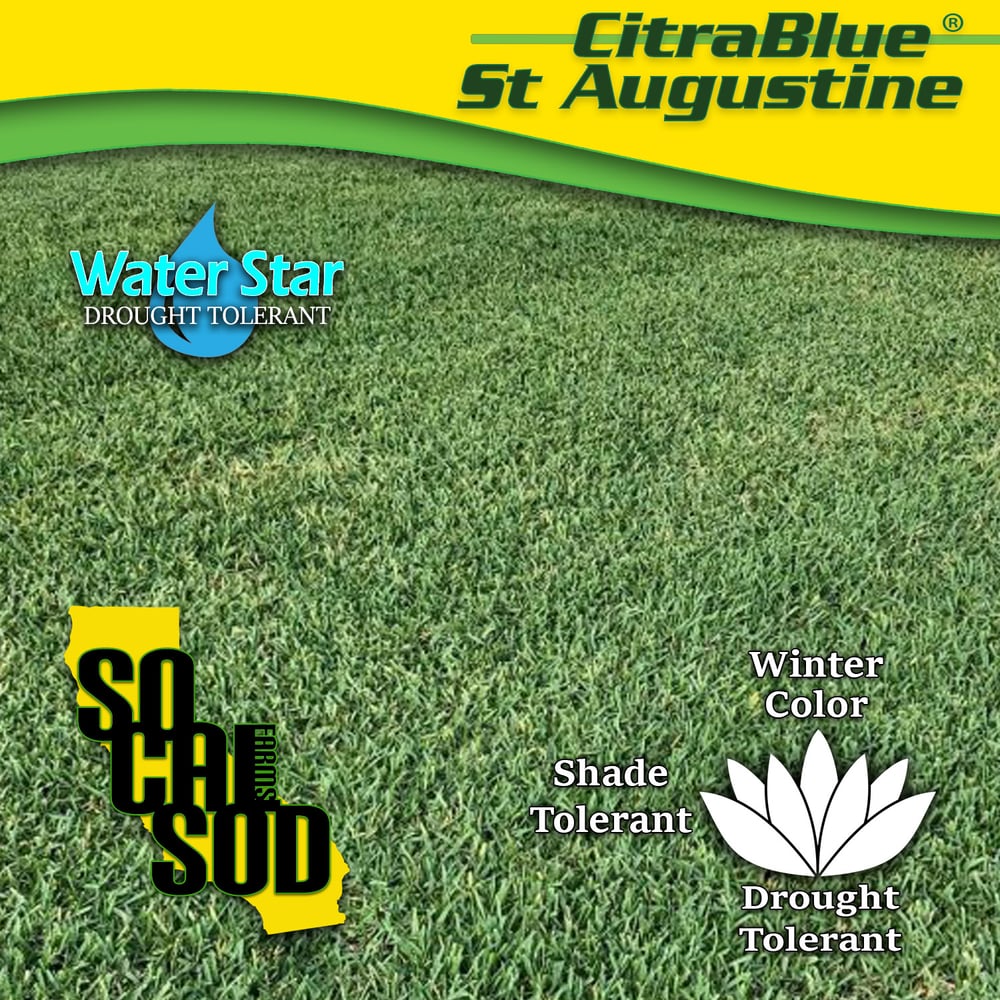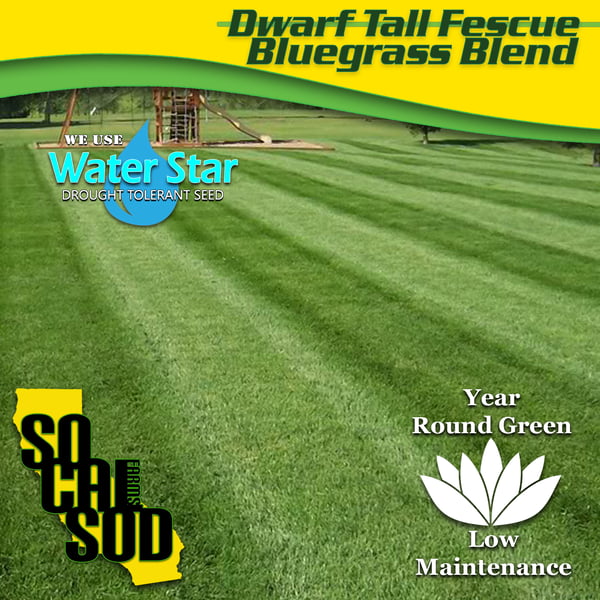CITRABLUE ST. AUGUSTINE
$1.15
Drought Tolerant Water Star Grass -
((AVAILABLE IN, SAN DIEGO COUNTY, ORANGE COUNTY, RIVERSIDE COUNTY, SAN BERNARDINO COUNTY, SOUTH / WEST LA COUNTY
CitraBlue® St. Augustine grass was developed by the University of Florida’s
turf grass breeding program. It is known for its deep blue-green color
and disease resistance. CitraBlue® has less vertical growth and allows for
less mowing and maintenance. Its shade tolerance and winter color are
ranked at the top of St. Augustine varieties
WATERING
For the first 20 days, water as needed to keep the topsoil moist. After 20
days, water two or three times a week during warm weather. No watering is
required during winter dormancy. Sandy soil requires more frequent watering
than clay soil. Inland areas require more water than coastal areas. Special
attention should be paid to slopes and mounds where runoff occurs. More
frequent, shorter watering may be necessary.
FERTILIZATION
Fertilize in six to eight week intervals during warm weather, depending on
your lawn’s color. Light green is an indication that your lawn needs fertilizer.
Use an all-purpose fertilizer and follow label directions.
MOWING
Mow seven to ten days after installation. Mow to a height of 2 to 3 inches.
CitraBlue® should be mowed at least once a week during the warm season.
You will not need to mow when your sod is dormant. Never mow more than
one third of the blade at one time; it may injure the plant.
DISEASES
CitraBlue® is highly resistant to common disease problems. The appearance
of brown spots may be a result of a watering problem. If brown spots remain
after adjusting your watering routine, a disease may be present. Consult your
local garden center as soon as possible.
WEEDS AND INSECTS
After your new sod has been established at least four weeks, you may begin
pesticide application for insect control, if necessary. Because pest and weed
conditions vary from area to area, it is best to follow the recommendations of
your local garden center or other turf specialist for your area.
DETHATCHING
To minimize thatch, dethatch at least once per year or more as needed.
The preferable time to dethatch is in the spring.
Sold in 5 sq ft slabs = 16" X 22.5"
Delivery
500 - 995 sq. ft' - $75.00 Delivery Fee (included in price below)
1000 sq. ft' or more - Free Delivery
1 2 3 4 5 6 7 8 9 10
Drought Tolerance 8
Disease Resistance 9
Wear Resistance 9
Shade Tolerance 7
Recovery 8
Winter Color 6
Heat Tolerance 9





